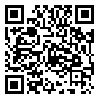BibTeX | RIS | EndNote | Medlars | ProCite | Reference Manager | RefWorks
Send citation to:
URL: http://sjsph.tums.ac.ir/article-1-287-en.html
Severe Acute Respirators&apos Syndrome (SARS), an emerging infectious disease first reported from the Chinese province of Guangdong, has already caused one worldwide outbreak. The syndrome spread across the globe by travelers. The etiologic agent was unknown at the beginning, but because of the rapid spread of the disease, an infectious agent with high transmission potency was suspected. Later workers at the Center for Disease Control and Prevention (CDC) and World Health Organization (WHO) succeeded in isolating a new coronavirus with a distinct genome from SARS patients. This new virus spread all over the world in a few weeks and the epidemic peaked in March and April. Within a short period of lime, the epidemic inflicted huge economic losses on the involved countries, especially in Asia. Finally the outbreak was contained in July, 2003. But is this really the end of SARS? The are no easy answers.
Considering this new disease and the probability of its reemergence, it is necessary for all health care workers to be familiar with some features of the syndrome (clinical and laboratory findings, approach to patients, routes of transmission, pre and post-travel recommendations and ways to control the infection).
We will provide you with some important information about this new emerging disease from a variety of sources.
| Rights and permissions | |
 |
This work is licensed under a Creative Commons Attribution-NonCommercial 4.0 International License. |





